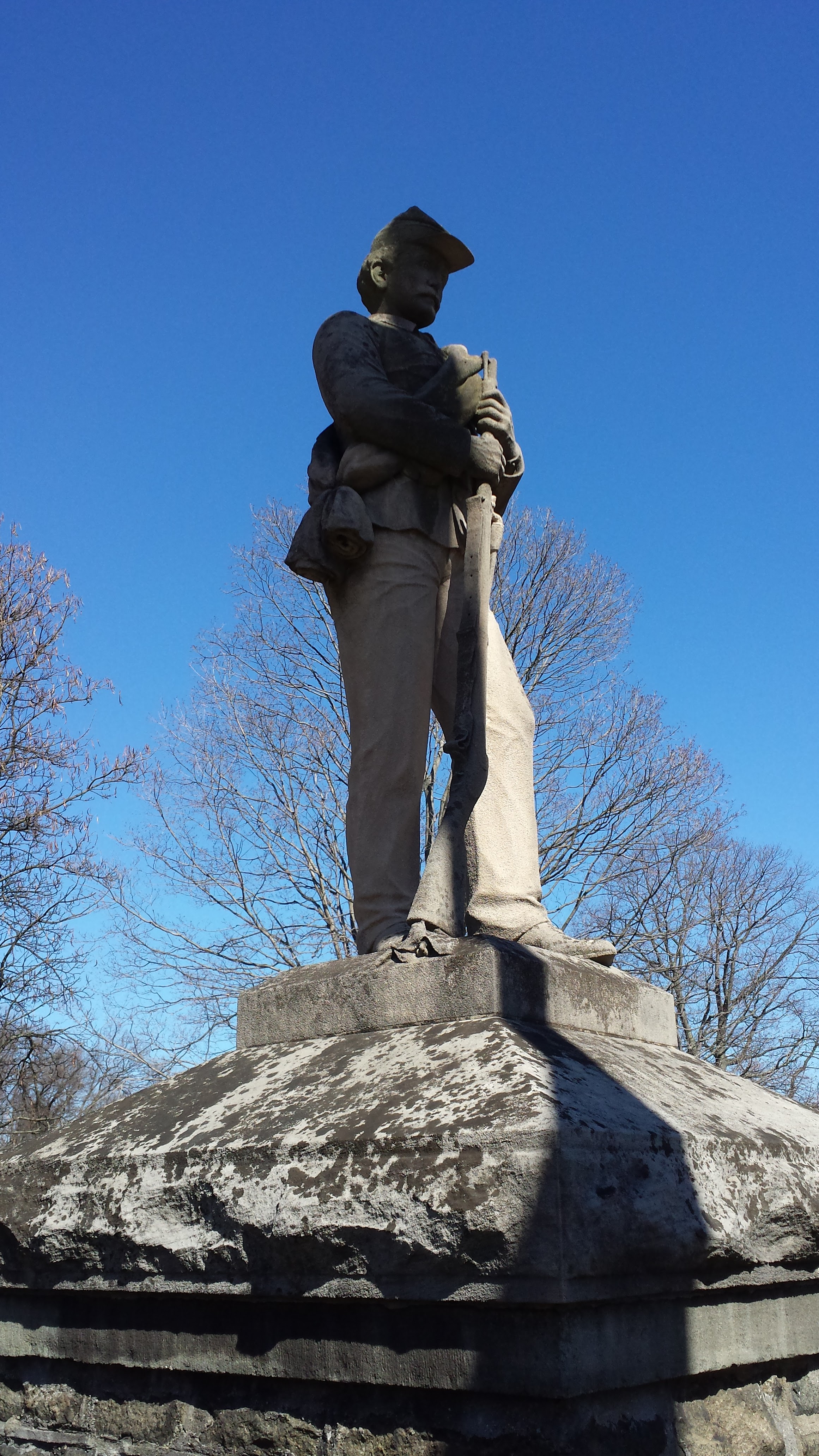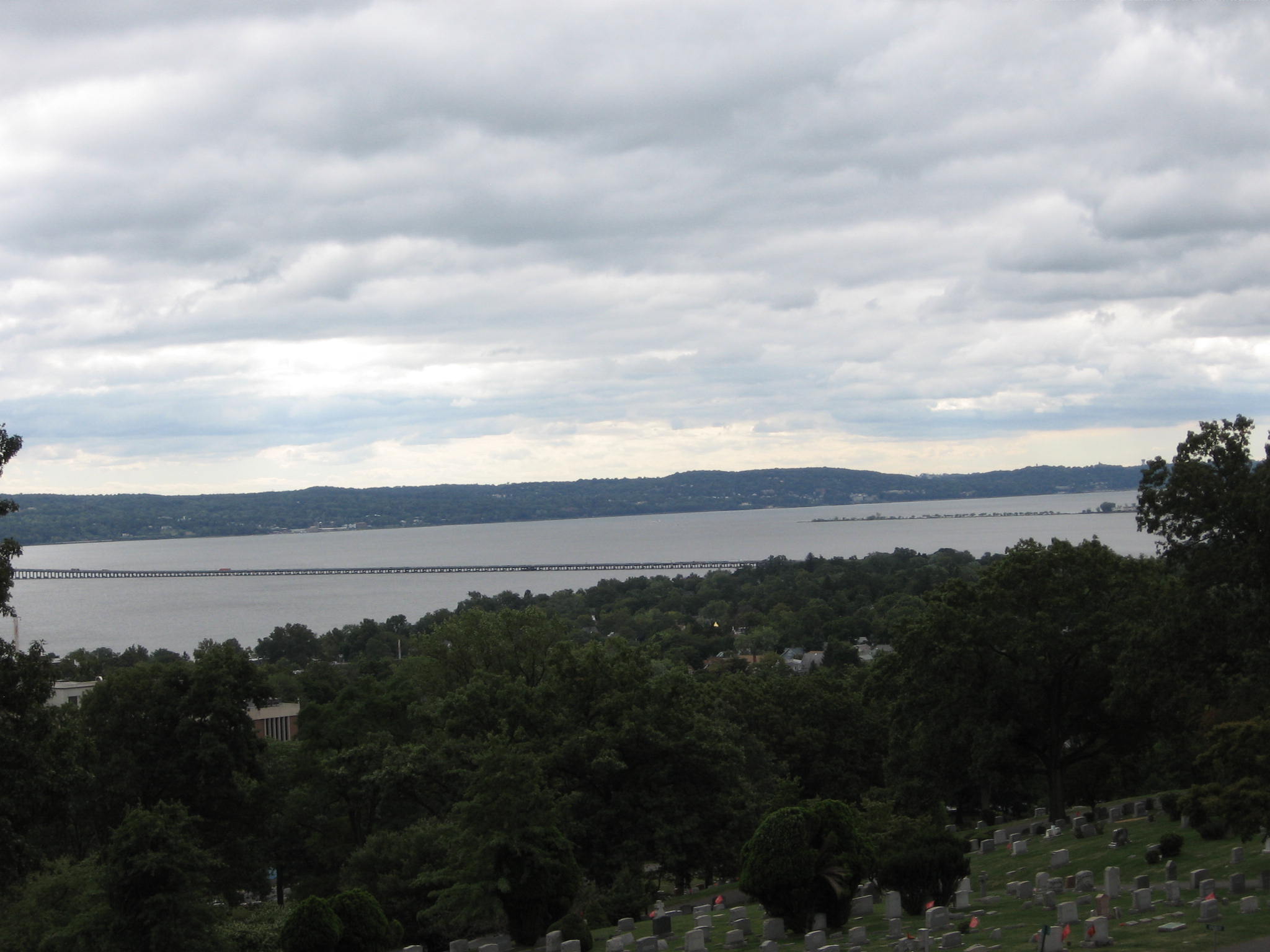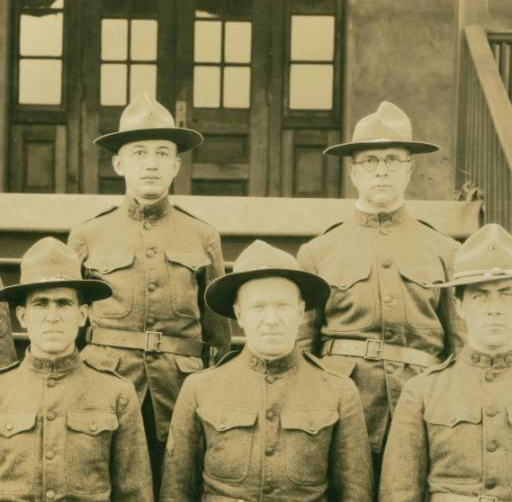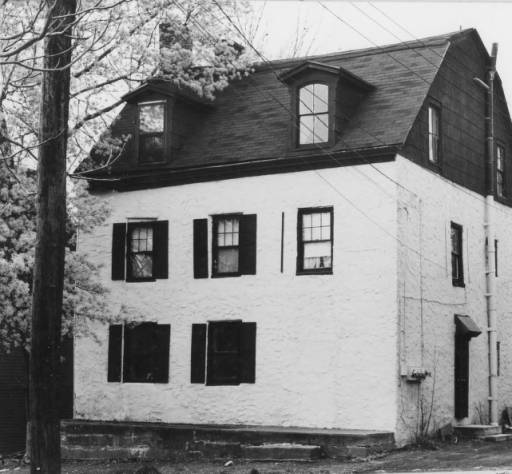This one from July 2013 bears re-posting. To the residents of Colonial Nyack, the Revolutionary War wasn’t some far away conflict, but part of their everyday lives. The first naval battle of the War and the first international salute to the new Country both took place right here in the Tappan Zee. See the struggle for freedom through THEIR eyes, and perhaps cherish “the great experiment” we call the United States a bit more. No human endeavor is ever perfect, and our Nation itself was born of compromise, for without it we would never have existed. We must still strive as our Nyack ancestors did to always make it better, to improve, to grow, and to continue striving in our national quest for “Life, Liberty, and the Pursuit of Happiness…”
I started this post having just returned home from watching the skies over Memorial Park light up with glorious fireworks celebrating America’s Independence Day; which as usual thrilled and excited the huge crowds who came to the village to watch. That got me wondering how many people watching with me realized that in a way they were watching a re-enactment of similar events that occurred over two hundred years ago in the same location, events that with one special exception, brought dread and pain rather than joy and celebration…

When people think of “The Revolution” and Rockland County’s place in it, if they are aware of any connection most would think of Stony Point and Tappan. Stony Point was the location of the Battle of Stony Point, and Tappan of course hosted Washington’s Headquarters and the famous trial and execution of Major John Andre (the British Officer who was the other important figure in Benedict Arnold’s thwarted plan to give over the plans to West Point). Both locations are proud of the roles they played in the American War for Independence – and rightly so – however the rest of the county did not just sit idly by and twiddle their thumbs or hum “Yankee Doodle” while history was made nearby. The Nyacks for instance were attacked by the Redcoats several times – not by land, but from the British War Vessels in our own Tappan Zee – the bombs bursting in air would come from the guns of warships firing on the homes, farms and businesses of the Hudson Shoreline. In fact, the very first Naval Battle of the Revolution would take place right off our shores in our own Tappan Zee. Later, the first ever acknowledgement of the United States of America as a Sovereign Nation would come as a seventeen-gun salute to General Washington from the guns of the British Warship fired with honor in the very same location just off our shore.
How Nyack and the Riverfront became a wartime target…
A bit of background would probably help in understanding how Nyack and what would become the other River villages wound up on the receiving end of Musketshot and Cannonballs. When Nieuw Netherland was handed over to the British by the Dutch without a shot fired in 1664, bloodshed was prevented by some shrewd bargaining on both sides. The British very much wanted the finest deep water port on the North American continent, and control of Hudson’s River beyond which all acknowledged would be the key to opening the continent’s interior. Nieuw Amsterdam and Pavonia (today’s lower Manhattan and Jersey City/Hoboken) were already a very busy FREE port with goods leaving the New World and heading to many European, Caribbean and African ports without the hinderance of the English King’s royal tariffs and restrictions of the New England ports to the north or the Virginia port to the south. Nieuw Netherland’s polyglot population, not just Dutch, but Walloon, Prussian, French Huguenot, Free West Africans and Caribs, Jewish Refugees, Irish, Moorish, and yes, Englishmen and women fleeing New England’s puritan regime made the young city and the Valley of the Hudson to the north the finest mercantile trading post and port on the continent. The Duke of York wanted our port and our river, but he also wanted to keep it profitable and running just the way it had been – only now paying taxes to the British Crown rather than as a state of the Dutch Republic. A student of “if it ain’t broke, don’t fix it” the Duke did not want to mess with a system – no matter how quirky – that worked and showed a profit. Peter Stuyvesant, discovering his city and the other communities of Nieuw Netherland beyond under the guns of a number of English Warships while he had nothing but his trading fleet in port meant there could simply be a massacre or there could be a deal.
The deal between the Duke and the Dutchman was called the “Articles of Capitulation” and transferred the ownership of the colony to England – under the written and signed treaty that allowed the colony – now separated into New York and New Jersey – to keep their freedom of religion (unlike New England), their system of courts (innocent until proven guilty, not the opposite as in the other colonies – as well as the public defender which did exist in English jurisprudence), allowance of women to own property (two of the major colonies that were part of Nieuw Netherland had been founded by women), manumission of slaves (slaves – black, indian or white – could not be kept in that condition for life, and could work their way to freeman status in just a few years, earn money while doing so, and could own property afterwards) and their continued status as a free port dealing directly with both London and Amsterdam as well as the rest of the Atlantic world. That meant that the two middle colonies wound up with a host of freedoms the other 11 did not have or would not have until significantly later. Oddly, that left New York colonists a bit ambivalent when it came to independence from the Crown – the Crown, frankly had for almost 100 years left them to their own devices demanding only their taxes. While New England chafed under more and more crippling taxes and infringement of civil rights, life was better and easier here. It was only when King George III and Parliament started chipping away at the Articles that the residents of Nyack and Tappan and the rest of Orangetown felt that perhaps something was amiss and they needed to take action.
Take action they did – as I’ve written elsewhere in this blog – the locals met at Jost Mabie’s Tavern (now the ’76 House Restaurant) and drafted the Orangetown Resolutions – ON JULY 4,1774. Two years to the day before the Declaration of Independence would be signed in Philadelphia! In it they addressed the King and Parliament stating: “We cannot see the late Acts of Parliament imposing duties upon us, and the Act for shutting up the port of Boston, without declaring our abhorrence of measures so unconstitutional and big with destruction… That we are in duty bound to use every just and lawful measure, to obtain a repeal of Acts, not only destructive to us, but which of course must distress thousands in the mother country… That it is our unanimous opinion, that the stopping all exportation and importation to and from Great Britain and the West Indies, would be the most effectual method to obtain a speedy repeal.” This was not a call for separation from England, but a reminder to her government that their recent behavior had been abusive and disruptive to the colonies. Unfortunately, George and his Parliament did not care for criticism very much, and declared the document treasonous and the residents of Orangetown rebellious and inciting of sedition. THAT response would push most of the population of what would become Rockland County into the Patriots camp, though a few notable citizens such as ferry mistress Molly Sneden remained Tory throughout the coming conflict.
Once the hostilities began, the British realized that New York and the Hudson Valley were critical to their efforts to break the rebellion and re-exert their rule in the lower 13 colonies. By holding the Hudson, the British commanders felt they would have effectively driven a wedge between New England and the Southern colonies, had they been completely successful with the strategy we might still be singing “God Save the Queen” instead of the “Star Spangled Banner”. On August 3, 1776 the American Galleys Whiting, Lady Washington, Crown and Spitfire engaged the British ships Phoenix, Roebuck and Tartar in the Tappan Zee in the first naval skirmish of the Revolution. The Patriots succeeded in keeping the Redcoats from heading further up the Hudson, and they were assisted by the local Shore Patrol on land with shots fired from the gun emplacements in Piermont (then known as Tappan Slote), Nyack and Upper Nyack. Retaliation came in the form of cannon-shot targeting shore side residences – the Haring Estate (now called the Onderdonk House in Piermont), the Cornelison home (a large colonial home where Salisbury Point Co-ops now stand) and the Hazzard Home near Hook Mountain took damage, but the enemy ships could not proceed further north.
October 15, 1776, Captain A. Hawkes Hay commanding repulsed an attack by the British on Nyack. By the fall of 1776, the British were not only in control of the City of New York, they had also gained control of Harlem, Bloomingdale and the other communities on Upper Manhattan and Fort Lee on the Jersey side. The Patriots firmly controlled the Hudson above West Point, but there was a struggle to keep the lower Hudson from coming under British control. Hay reported that the ships attempting to land at Nyack were prevented by the men under his command, including the use of the Swivel Gun emplacement in Upper Nyack. Severe damage was done to the house and barn of Philip Sarvent and though only a few men were injured in this encounter (no deaths) there were several other attacks on the area in 1777 and 1780. Hay’s own home would be targeted by the British from the River and destroyed in one of these raids, Major John Smith’s house in Upper Nyack destroyed in another. Land incursions came as well – and not only soldiers were injured or died. Horrified Patriots discovered the body of Mrs. Garret Myers on her farm near Rockland Lake left to rot with her face smashed in from attempting to protect herself and her farm from British soldiers intent on food and perhaps something else, as a young and attractive woman named Mrs. Snyder was raped and left for dead on her nearby farm by the Hook.
Salisbury Manor, home of the Cornelisons (hence, Cornelison Avenue) because of its exposed location continue to attract enemy fire from the Hudson, and it seems holes from musket balls were still present in the door frames up until the Manor Home was raised in the 1950s to build the Salisbury Co-ops. A Tory neighbor, reportedly jealous of the lovely home, would betray Michael Cornelison Sr and his wife to the British for their efforts to assist the Patriots, imprisoning them in New York City – Mrs Cornelison was allowed to return to Nyack 6 months later, her husband would remain in custody for 3 additional months. Oddly, the same quisling neighbor did not alert the Redcoats to the presence of Michael Cornelison Jr, even though he spotted the young man hiding in the house’s vast rafters during the raid. It appears young Michael was a Mason as was the tattler, and I suppose Masons just don’t DO that to each other… not that it did the young man much good, as he had to suffer through the local British Commander using his home as a headquarters for several months! All that’s left of that historic home now are some of the sandstone blocks of the walls used as stairs leading to Salisbury Point’s pool.
At the time Nyack, though small, was the headquarters of the Whaling Fleet – all rugged ships and men who favored the Patriots and vigorously defended the Nyacks from attempted landing after attempted landing by the British. Between the Whaling Fleet, the very successful and accurate shore patrol and swivel guns, and a certain resident sea-captain named Henry Palmer (of the Old Palmer Burial Ground Palmers) the British fleet went from annoyance to absolute loathing of Nyack and fired at will at any visible structure whenever possible.
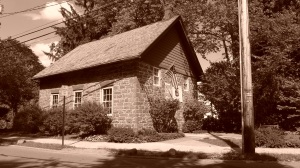
photo by J.P.Schutz
Captain Palmer owned a large vessel carrying goods for one of the largest mercantile firms in New York City prior to the outbreak of hostilities. He was offered great monetary compensation for serving the King’s forces, but he adamantly refused – in fact, on his next sailings he transported two cargos of ammunition, arms and supplies “acquired” by the Sons of Liberty from British supply depots in the city which he brought to the camp of the Continental Army. His activities made his family unsafe in Manhattan and he moved them to Broadway in Upper Nyack, near Old Mountain Road. From there he continued to harry the British and was responsible for repulsing attempted landings numerous times – with consistent fatal results for the British and naught but wounds for the Nyackers. In early July 1777 he and the Shore Guard fended off two boats killing 3 men; in late July they returned, both to attempt a landing and to destroy a sloop moored between the Palmer home and the Sarvent home. Palmer, Sarvent and the Shore Guard prevented three attempts at landing with the toll for the British this time at 9 men. Later that year, the Upper Nyack swivel gun emplacement, close by his property, enabled the Nyackers to later capture two landing boats and send their crews over to Tappan as prisoners of war. A warship becalmed off Nyack’s shore unable to reach land and floating with the tide saw the loss of 36 men to Palmer’s crew of fatally expert gunners. The result of his actions was a constant barrage of enemy fire anytime a ship reached this far up the river. By 1781, Nyack’s defenders had in addition to the Shore Patrol and gun emplacements, six whaleboats and forty-two men led by Captain Palmer, Nyack’s own Bane of the British. Major John L. Smith, Captain Aury Smith, and Corporal Philip Sarvent, three of our Revolutionary War heroes may be found resting beneath their headstones in the Old Palmer Burial Ground on Old Mountain Road in Upper Nyack.
The British finally surrendered at Yorktown in October of 1782, though due to distance, travel time and red tape the Peace Treaty would not be fully signed until the next year. In May of 1783, General Washington met with Sir Guy Carleton in Tappan to confer on the final evacuation of British Troops from New York – they would then ride back to the riverfront to Onderdonk House on May 7th. At that time Onderdonk House was owned by John Haring, who was our own representative at the Continental Congress. Onderdonk House, too, had taken an extreme beating from British guns during the war (looking at it today, in the process of some kind of restoration – we hope – it might look like it did at its worst). Carlton and Washington were feted and feasted at Onderdonk House, and then the H.M.S. Perseverance fired its seventeen gun salute to honor Washington and to acknowledge, for the first time, our new sovereign nation – these United States of America. That’s right folks, it happened… right here.

photo by J.P.Schutz
Read Full Post »




